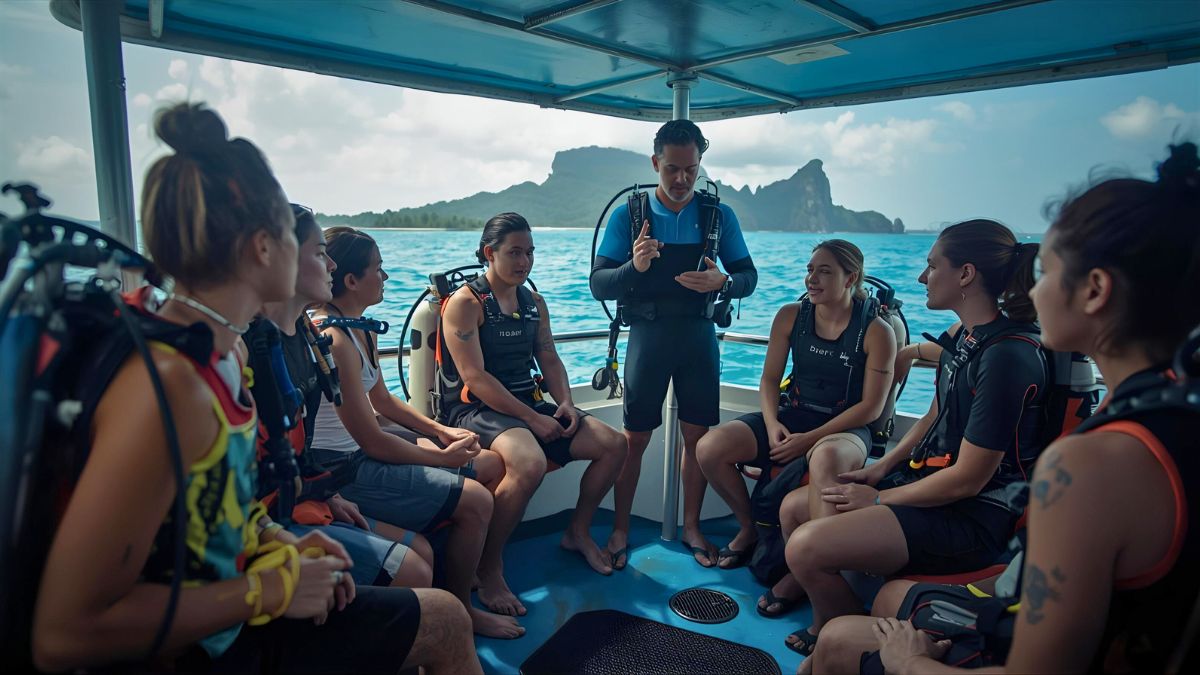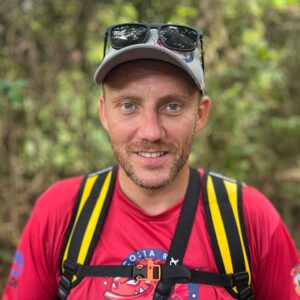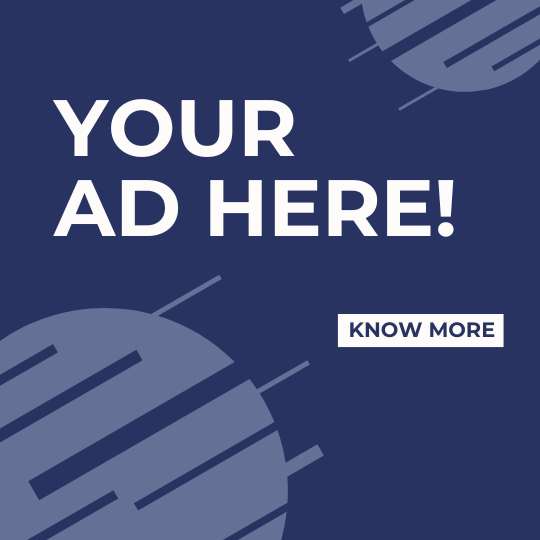Marine conservation in Costa Rica isn’t just an environmental priority. It’s a way of life that protects the incredible biodiversity visible in these waters every day. As someone who’s spent years exploring the Pacific coast, I’ve witnessed both the remarkable beauty and the urgent threats facing these ecosystems.
Costa Rica’s oceans face pressure from overfishing, pollution, and climate change. Conservation efforts are making a real difference, though, and you can be part of the solution. Whether you’re planning a dive trip, curious about marine ecosystems, or looking for ways to help, understanding marine conservation in Costa Rica is your first step toward protecting these remarkable waters for future generations.
Why Is Costa Rica a Global Marine Biodiversity Hotspot?
Costa Rica sits in a remarkable position between the Pacific Ocean and the Caribbean Sea. This tiny country holds 3.5% of the world’s marine biodiversity despite occupying only 0.03% of the planet’s surface.
What Makes Costa Rica’s Location Unique for Marine Life?
The Pacific side benefits from nutrient-rich upwellings that bring deep, cold water to the surface. These upwellings carry nutrients that feed plankton, which feeds small fish, which feeds bigger fish. The result? Massive schools of jacks, snappers circling the reefs, eagle rays gliding past, and hammerhead sharks patrolling the blue at sites like Isla del Caño.
Did you know? Costa Rica’s waters are home to over 6,700 marine species, including dolphins, whales, sea turtles, and more than 90 species of sharks and rays.
How Do Two Oceans Create Such Rich Biodiversity?
The Caribbean coast offers a completely different experience. The waters are calmer, warmer, and home to extensive coral reef systems. While the Pacific gives you big animal encounters, the Caribbean rewards you with colorful reef fish and healthy hard corals.
This dual-ocean geography means Costa Rica supports both Pacific and Caribbean species, plus migratory animals that travel between regions. Humpback whales from both hemispheres visit at different times of year. Sea turtles nest on both coasts.
What Species Rely on Costa Rican Waters?
Costa Rica’s marine ecosystems support an incredible variety of life. Five species of sea turtles nest here, including the massive leatherback that can weigh up to 2,000 pounds. Dolphins and whales migrate through these waters seasonally.
Coral reefs host hundreds of fish species, from tiny gobies to massive groupers. The biodiversity extends from the surface to the depths. Pelagic species like manta rays and whale sharks pass through during migrations. Reef sharks, including white-tips and nurse sharks, rest under coral ledges during the day.

What Is Marine Conservation?
Marine conservation encompasses everything we do to protect, restore, and preserve ocean ecosystems. It’s our response to human activities that damage marine life: overfishing, pollution, habitat destruction, and climate change.
Conservation work includes establishing protected areas, enforcing fishing regulations, reducing pollution, restoring damaged habitats, and educating communities about sustainable practices.
Why Are Healthy Oceans Critical for Costa Rica’s Economy?
Costa Rica’s economy depends heavily on healthy marine ecosystems. Tourism brings millions of visitors annually, with many coming specifically to see marine life. Whale watching tours, diving excursions, sport fishing, these activities generate substantial income for coastal communities like Uvita, Quepos, and Puerto Viejo.
When coral reefs die or fish populations collapse, the damage extends beyond environmental loss. Local fishermen, tour operators, restaurants, and hotels all depend on thriving oceans. Marine conservation in Costa Rica directly protects jobs and livelihoods.
What Role Does Marine Conservation Play in Climate Change?
Oceans are climate regulators. They absorb about 30% of the carbon dioxide we release into the atmosphere. Mangrove forests lining Costa Rica’s coasts are particularly effective at storing carbon, even more so than rainforests per acre.
The ocean also produces between 50% and 80% of Earth’s oxygen through phytoplankton photosynthesis. Every second breath you take comes from the ocean. This makes marine conservation essential not just for saving fish, but for maintaining the systems that keep our entire planet habitable.
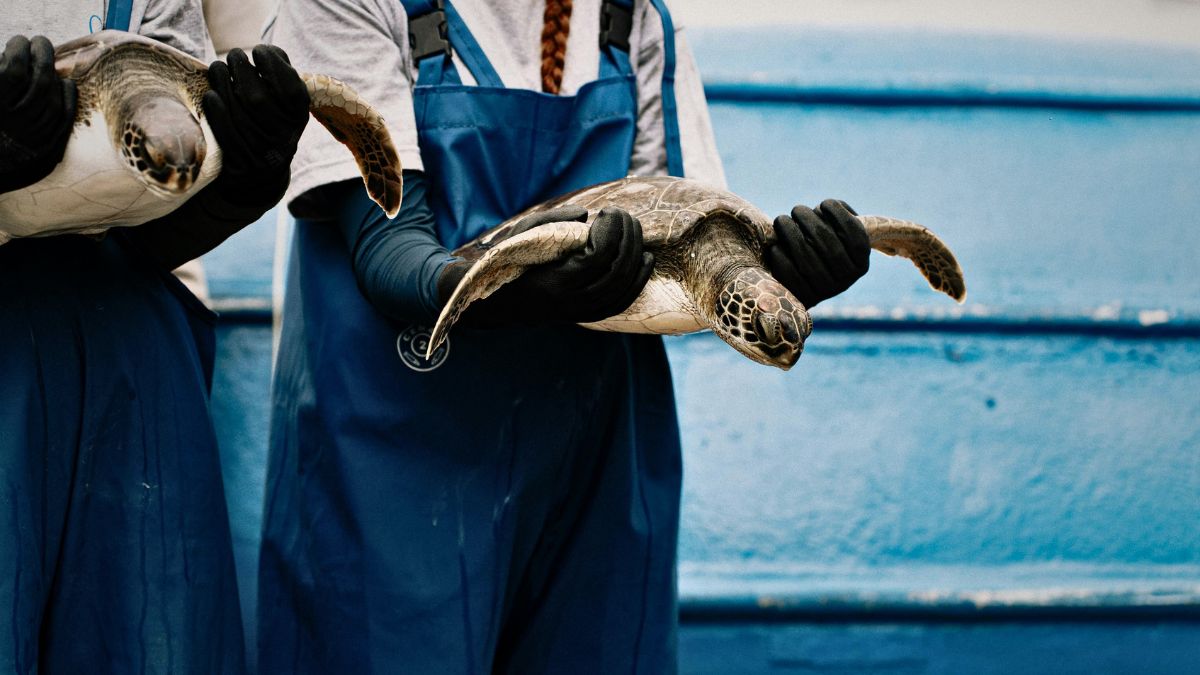
Where Are the Major Marine Conservation Areas in Costa Rica?
Costa Rica has established numerous marine protected areas (MPAs) where fishing is restricted or banned, and human impact is carefully managed. These protected zones demonstrate the country’s commitment to preserving marine biodiversity.
Why Is Cocos Island Called the “Galápagos of Central America”?
Cocos Island National Park sits 532 kilometers off Costa Rica’s Pacific coast. Remote, difficult to reach, and absolutely spectacular, UNESCO designated it a World Heritage Site because of its unique marine biodiversity.
The island protects 2,330 hectares of land and 201,153 hectares of ocean. Diving Isla del Coco means entering a world of hammerhead shark schools, whale sharks, manta rays, and dolphins.
How Remote Is Cocos Island?
The remoteness helps protect Cocos, but illegal fishing remains a problem. Costa Rican authorities patrol the area, though vast ocean distances make enforcement challenging. Reaching Cocos requires a 36-hour boat journey from the mainland, making it one of the most isolated dive destinations in the world.
What Makes Isla del Caño Special for Marine Conservation?
Isla del Caño Biological Reserve protects 5,800 marine hectares about 20 kilometers off the Osa Peninsula. The reserve fills with coral formations, fish schools, and regular sea turtle sightings.
Caño combines accessibility with protection. You can reach the island in less than an hour by boat from Uvita. The reserve status means no fishing, allowing marine populations to recover and thrive.
What Can You See at Isla del Caño?
Typical dives reveal white-tip reef sharks resting under coral heads, massive schools of grunts and snappers, octopuses hunting in reef crevices, and green sea turtles cruising past. The coral coverage here surpasses many reefs worldwide in health and diversity.
How Does Corcovado National Park Protect Marine Life?
Corcovado National Park is famous for its rainforest, but its marine areas deserve equal attention. The park extends into coastal waters, creating a buffer zone where marine life thrives without fishing pressure.
The combination of mangrove estuaries, rocky reefs, and open ocean creates diverse habitats. Dolphins are common, with pods of 30 or more animals frequently spotted in the area.
What Is Golfo Dulce’s Role in Marine Conservation?
Golfo Dulce is one of only four tropical fjords in the world. This deep inlet on Costa Rica’s southern Pacific coast serves as a critical nursery for dolphins, whales, and countless fish species.
The fjord’s unique geography creates calm, protected waters where humpback whales give birth and nurse calves. Researchers conduct whale surveys here regularly, while conservation organizations work with local communities to promote sustainable tourism practices.
Fun fact: Both Northern and Southern Hemisphere humpback whales visit Costa Rica at different times of year, making it one of the few places where you can potentially see humpbacks year-round.
What Threatens Costa Rica’s Marine Ecosystems?
Despite strong conservation efforts, Costa Rica’s marine ecosystems face serious threats requiring ongoing attention and action.
How Does Illegal Fishing Impact Marine Protected Areas?
Illegal fishing ranks among the biggest problems facing marine conservation in Costa Rica. Even in protected areas like Isla del Caño and Cocos Island, fishing boats occasionally sneak in under cover of darkness.
At Cocos, industrial fishing vessels target sharks for their fins and tuna for export markets. Despite patrols by Costa Rican coast guard, vast distances and limited resources make complete enforcement nearly impossible.
What Fishing Methods Cause the Most Damage?
Long-line fishing and trawling are particularly destructive. They catch everything indiscriminately: sea turtles, rays, and juvenile fish that haven’t had a chance to reproduce. These methods damage ocean floor habitats and disrupt entire food webs, undermining marine conservation in Costa Rica at a fundamental level.
Why Is Plastic Pollution a Crisis for Costa Rican Waters?
Plastic pollution represents one of the most visible and devastating threats to marine life. Beach cleanups regularly collect thousands of pounds of plastic waste from rivers, storm drains, and ocean currents that carry trash from across the Pacific.
Sea turtles mistake plastic bags for jellyfish and eat them. Fish consume microplastics that enter the food chain at every level. The microplastics are everywhere, penetrating even the deepest ocean zones.
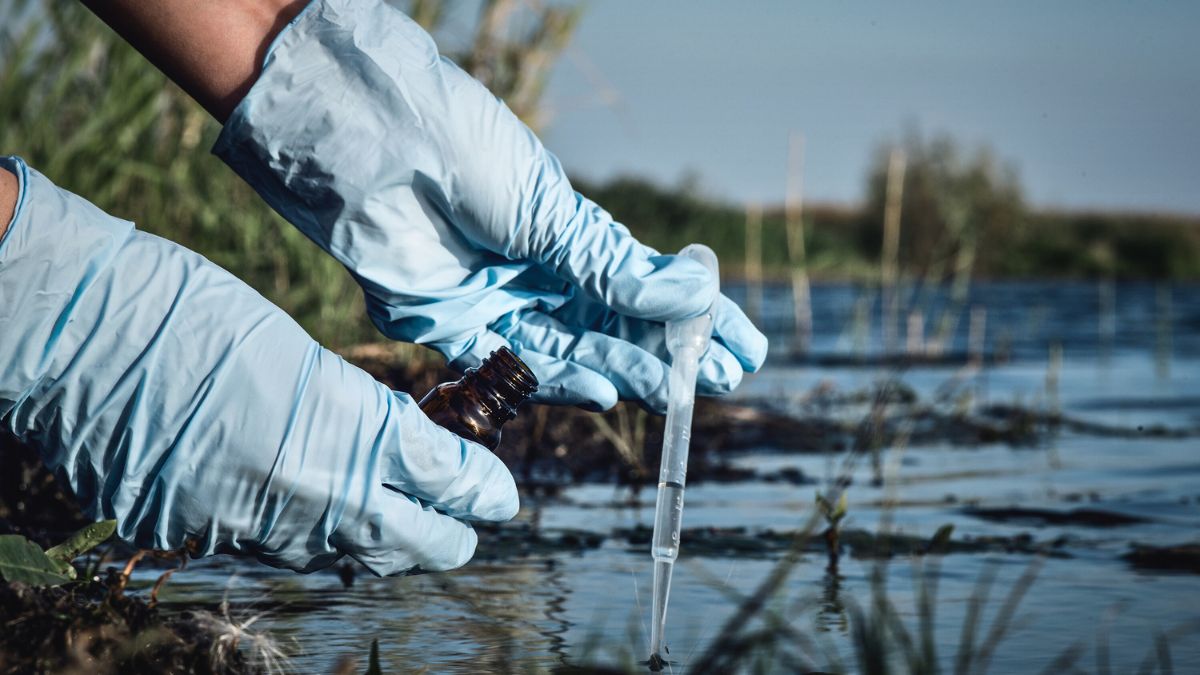
How Does Agricultural Runoff Affect Coastal Waters?
Agricultural runoff adds another pollution layer. Fertilizers and pesticides wash down rivers into coastal waters, causing algae blooms that suffocate coral reefs. Oil spills, though less common, cause catastrophic damage when they occur.
What Is Coral Bleaching and How Does It Affect Costa Rica?
Coral bleaching threatens marine ecosystems severely. When ocean temperatures rise too high, corals expel the symbiotic algae that give them color and provide nutrients. The coral turns white and, if temperatures don’t drop, eventually dies.
How Often Does Coral Bleaching Occur?
Bleaching events have become more frequent over the past decade. The 2015-2016 El Niño event caused significant bleaching in Pacific reefs. Climate change is making these events more frequent and severe, with some reefs experiencing bleaching multiple times within just a few years.
What Conservation Policies Protect Costa Rica’s Oceans?
Costa Rica has earned its reputation as an environmental leader through concrete policies and commitments that prioritize marine conservation.
How Is Costa Rica Expanding Marine Protected Areas by 2030?
Costa Rica committed to protecting 30% of its marine territory by 2030. This ambitious goal requires expanding existing MPAs and creating new ones.
The Bicentenario Marine Protected Area and expanded protections around Cocos Island National Park represent major steps forward. These expansions balance conservation with community needs, addressing concerns from fishing communities about access to traditional fishing grounds.
What Do These Expansions Mean for Marine Life?
The 30% goal aligns with international conservation targets and positions Costa Rica as a leader in ocean protection. Studies consistently show that well-managed MPAs increase fish populations both inside and outside protected boundaries, benefiting fishermen and ecosystems alike.
What Is Costa Rica’s National Biodiversity Strategy?
Costa Rica’s National Biodiversity Strategy emphasizes marine conservation as a national priority. The strategy focuses on protecting critical habitats, endangered species, and ecosystem connectivity.
Recent agreements between the Ministry of Environment and the Costa Rican Fishing Authority established binding rules for protecting vulnerable shark species, including whale sharks, tiger sharks, and three species of hammerhead sharks. Fishing captains must now record and release hammerheads caught as bycatch, providing valuable data for conservation decisions.
How Tourism Support Marine Conservation in Costa Rica?
Sustainable tourism creates economic value from healthy ecosystems, giving communities financial incentives to protect marine environments rather than exploit them.
Why Should You Choose Eco-Certified Tour Operators?
Not all tour operations are equal regarding environmental responsibility. Eco-certified operators follow practices that minimize environmental impact and often contribute directly to conservation projects.
Responsible operators maintain strict environmental standards: no touching marine life, proper waste management, participation in beach cleanups, and support for local conservation organizations. They also educate every visitor about the ecosystems they’re experiencing.
How Does Your Tourism Choice Impact Conservation?
When you book with responsible operators, your money supports conservation. Every tour generates income depending on healthy reefs and abundant marine life, creating a positive feedback loop where conservation becomes economically advantageous.

What Is the Blue Economy and How Does It Work?
The blue economy uses ocean resources sustainably while promoting economic growth. Instead of choosing between economic development and environmental protection, the blue economy seeks solutions achieving both goals.
In Costa Rica, this means supporting sustainable fishing practices, promoting eco-tourism, developing marine renewable energy, and protecting coastal ecosystems that provide natural services like storm protection and carbon storage.
How Do Tourism Fees Fund Conservation?
Entrance fees to marine protected areas fund park operations, patrols, and research. Local communities benefit economically, reducing pressure on marine resources from overfishing.
Tourism also creates political will for conservation. When protected areas generate significant tourism revenue, governments are more likely to support conservation policies. Money talks, and sustainable tourism gives nature a voice in economic calculations.
What Are the Marine Conservation Success Stories in Costa Rica?
Despite challenges, conservation efforts in Costa Rica are working, with results you can see and measure.
How Are Sea Turtle Populations Recovering?
Sea turtle conservation stands as one of Costa Rica’s biggest success stories. All five sea turtle species found in Costa Rican waters were once severely depleted by egg poaching, hunting, and fishing bycatch.
Thanks to strict protection measures and community-led conservation programs, populations are rebounding. Beach patrols protect nesting sites, hatcheries increase survival rates, and education programs have changed local attitudes toward turtles.
What Methods Help Protect Sea Turtles?
Volunteers patrol nesting beaches throughout Costa Rica, protecting eggs from poachers and relocating nests threatened by high tides. Community involvement has been crucial. When locals see economic benefits from turtle tourism, they become conservation advocates.
What Progress Has Been Made in Coral Reef Restoration?
Coral restoration is a newer strategy in marine conservation in Costa Rica, but it’s showing real promise. Organizations like Marine Conservation Costa Rica actively plant coral fragments in degraded reef areas.
The process involves growing coral fragments in underwater nurseries, then transplanting them to damaged reefs. It’s labor-intensive work requiring trained divers, but it produces results. Transplanted corals grow and eventually reproduce, helping rebuild reef structure.
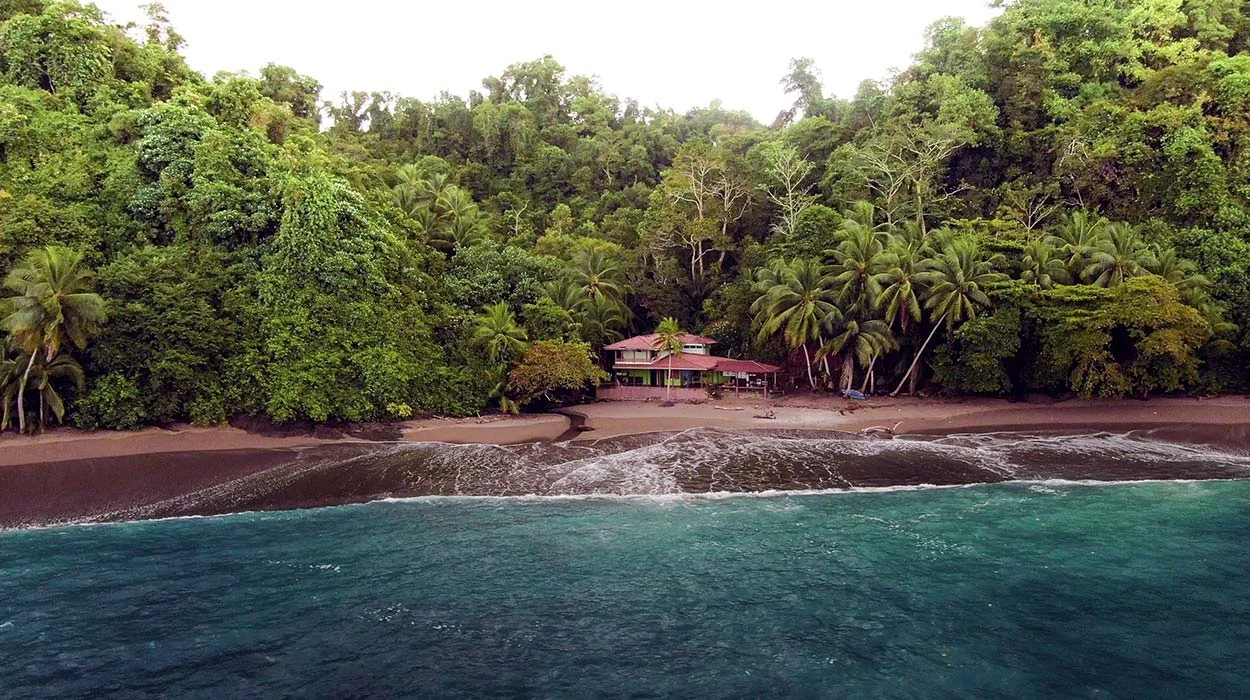
What Challenges Does Marine Conservation Face in Costa Rica?
Even with strong commitment and visible successes, marine conservation in Costa Rica faces ongoing challenges worth discussing honestly.
How Difficult Is It to Enforce Marine Laws in Remote Areas?
Enforcement remains the biggest practical challenge. Costa Rica has excellent laws on paper, but enforcing them across vast ocean territories with limited resources is difficult.
Cocos Island sits 300 miles offshore. Patrolling that area continuously requires boats, fuel, trained personnel, and money. Even closer to shore, monitoring all coastal waters exceeds current resource capacity.
Can Development and Conservation Coexist?
Costa Rica’s coastline is developing rapidly. Hotels, restaurants, marinas, and residential developments are expanding into previously undeveloped areas. This growth brings economic benefits but also increases pressure on coastal ecosystems.
Balancing development with conservation requires careful planning. Communities need economic opportunities, but uncontrolled coastal development destroys the natural features that attract tourists in the first place. Poor sewage treatment, coastal construction, and increased boat traffic all impact marine environments.
How Can You Support Marine Conservation in Costa Rica?
You don’t need to be a marine biologist or live in Costa Rica to make a meaningful difference.
Why Should You Book with Responsible Operators?
Your choice of tour operator matters significantly. When booking tours, ask about environmental policies. Do they maintain proper practices? Do they touch or feed marine life? Do they contribute to local conservation organizations? Do they hold eco-certifications?
Responsible operators might cost slightly more because they invest in training, equipment maintenance, and conservation support. That extra cost protects the environments you came to see.

How Can Diving Certifications Help You Contribute?
Getting certified as a diver opens opportunities to participate directly in conservation. Specialty courses teach conservation techniques and train divers to conduct underwater surveys contributing to scientific research.
Citizen science projects need volunteer divers to help monitor reef health, count fish populations, remove invasive species, and document marine life. With proper training, recreational divers become valuable contributors to marine conservation in Costa Rica.
What Daily Actions Reduce Your Ocean Impact?
Conservation starts at home, regardless of where you live. Small changes in daily habits collectively make enormous differences.
How Can You Reduce Plastic Use?
Reduce single-use plastic. Every plastic bottle, bag, or straw you avoid is one less piece of trash that might end up in the ocean. Bring reusable bags, bottles, and containers.
What Seafood Choices Support Sustainability?
Choose sustainable seafood. Apps like Seafood Watch help you select fish species that aren’t overfished and are caught using environmentally responsible methods.
How Can You Support Conservation Organizations?
Support conservation organizations financially. Even small donations help fund research, patrols, and restoration projects. Look for groups working directly in Costa Rica on marine issues.
Did you know? It takes about 450 years for a plastic bottle to decompose in the ocean. Every piece of plastic you prevent from entering the waste stream protects marine life for centuries.
What Does the Future Hold for Marine Conservation in Costa Rica?
The future looks cautiously optimistic. Costa Rica has demonstrated genuine commitment, and that commitment is producing measurable results.
What New Technologies Support Conservation?
Marine protected area expansion continues. New technologies like satellite monitoring and drone surveillance make enforcement more effective. Growing international cooperation helps address problems like illegal fishing that cross national boundaries.
How Will Climate Change Impact Future Efforts?
Climate change remains the wildcard. Even perfect local conservation can’t fully protect reefs from global warming and ocean acidification. But by maintaining healthy, resilient ecosystems, Costa Rica gives its marine life the best possible chance to adapt to changing conditions.
The next generation offers hope. Young Costa Ricans are growing up with conservation values built into their education and culture. They’re proud of their country’s environmental leadership and committed to maintaining it.
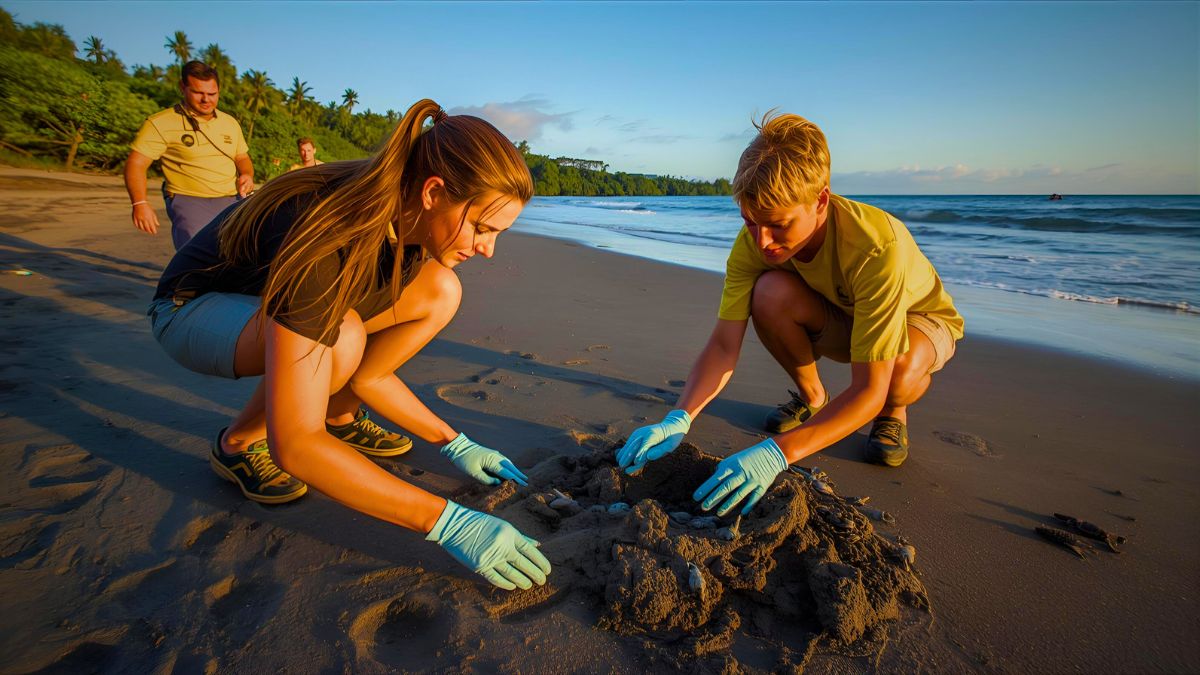
Frequently Asked Questions
What percentage of Costa Rica’s waters are protected?
Costa Rica has committed to protecting 30% of its marine territory by 2030. Currently, marine protected areas cover significant portions of both Pacific and Caribbean waters, including Cocos Island National Park, Isla del Caño Biological Reserve, and numerous other protected zones.
Can I visit marine protected areas in Costa Rica?
Yes, most marine protected areas allow visitors through licensed tour operators. Areas like Isla del Caño welcome divers and snorkelers daily, though activities are regulated to minimize environmental impact. Entrance fees help fund conservation efforts.
Which sea turtle species nest in Costa Rica?
Five sea turtle species nest on Costa Rican beaches: leatherback, green, hawksbill, olive ridley, and loggerhead turtles. The Pacific coast, particularly beaches in Guanacaste and the Osa Peninsula, hosts major nesting sites. The Caribbean coast is famous for green turtle nesting.
How does illegal fishing affect Costa Rica’s marine life?
Illegal fishing depletes fish stocks, damages habitats through destructive methods like trawling, and kills protected species caught as bycatch. It’s particularly problematic in remote areas like Cocos Island, where enforcement is challenging due to distance and limited patrol resources.
What is coral bleaching and why does it happen?
Coral bleaching occurs when rising ocean temperatures stress corals, causing them to expel the symbiotic algae that provide color and nutrients. Without these algae, corals turn white and may die if temperatures remain elevated. Climate change is increasing the frequency and severity of bleaching events.
How can tourists support marine conservation in Costa Rica?
Tourists can support conservation by choosing eco-certified tour operators, paying entrance fees to protected areas, participating in beach cleanups, avoiding single-use plastics, respecting wildlife viewing guidelines, and donating to local conservation organizations working on marine issues.
What makes Costa Rica’s marine biodiversity unique?
Costa Rica’s position between the Pacific Ocean and Caribbean Sea creates unique conditions supporting both ecosystems. Nutrient-rich Pacific upwellings and calm Caribbean waters host over 6,700 marine species, including five sea turtle species, multiple whale and dolphin species, and extensive coral reefs.
Protecting Costa Rica’s Blue Through Action
Marine conservation in Costa Rica represents both a challenge and an opportunity. The challenges are real: illegal fishing, pollution, climate change, and enforcement difficulties persist. But the opportunities are equally real, and they’re worth fighting for.
These waters deserve protection, not just for their beauty or biodiversity, but because healthy oceans support healthy communities and a healthy planet.
You can be part of the solution. Choose responsible tour operators when you visit. Support conservation organizations. Make sustainable choices in your daily life. Get certified as a diver and participate in monitoring projects.
Costa Rica’s marine ecosystems need advocates who’ve seen these places, understand what’s at stake, and commit to protecting them. Whether you’re floating above a coral reef or reading about conservation from thousands of miles away, you have a role to play in marine conservation in Costa Rica.
Sources and References
This article draws on information from authoritative conservation organizations and government agencies:
- SINAC – Costa Rica Protected Areas System
- UNESCO World Heritage Centre. Cocos Island National Park
- International Union for Conservation of Nature – Marine Protected Areas
- NOAA – Ocean Conservation Research
- Conservation International. Costa Rica Marine Conservation Program

